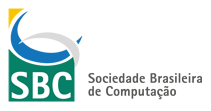Interdisciplinaridade no ensino de física e computação na educação básica: relato de experiência de um curso de formação inicial e continuada sob a perspectiva na construção de experimentos
Resumo
Vivemos em uma realidade imersa em inovações tecnológicas constantes que emergem e tornam-se indispensáveis em todas as áreas, por consequência dessa relação indissociável entre sociedade e tecnologia os processos de aprendizagem também são afetados. A formação do estudante do século XXI passa pela perspectiva de formação tecnológica, pela necessidade de letramentos digitais que o permita atuar como produtor crítico na sociedade moderna, não basta ter habilidade com as ferramentas TICs disponíveis para acesso à informação, exige-se deste indivíduo pensamento crítico, argumentação e capacidade de resolução de problemas. A Sociedade Brasileira de Computação (SBC), em seu documento Itinerário Formativo de Computação, vai além da necessidade de formação tecnológica, mas sim na formação em computação na educação básica, que hoje é comparável à alfabetização no passado, contribuindo para a compreensão plena do mundo imerso em tecnologias digitais, capacidade de aprendizagem e resolução de problemas, e apoio ao aprendizado das demais disciplinas. Frente a esta realidade o presente projeto voltou-se ao ensino de ciências naturais e levanta-se a questão: como desenvolver estas habilidades nas aulas de ciências na educação básica, mas especificamente nas aulas de física? Este trabalho teve como objetivo o ensino de física e computação de forma interdisciplinar na perspectiva do letramento científico e digital em um curso de formação inicial e continuada para 13 estudantes do ensino médio do 1º, 2º e 3º ano, utilizando, para isso, uma metodologia voltada no desenvolvimento de projetos. Considerando que a associação entre teoria e prática no ensino de física normalmente é realizada através de experimentos, os projetos que foram desenvolvidos pelos estudantes durante as aulas consistiam na criação de experimentos físicos através da plataforma Arduino e seus respectivos sensores, utilizando conceitos de computação, programação e robótica. Para isso formou-se uma equipe multidisciplinar composta por professores da área da física e computação para planejamento coletivo a cada encontro do curso, desenvolvendo de forma interdisciplinar o conteúdo da área de física e computação a serem abordados de forma a fornecerem subsídios ao estudante para desenvolver o experimento. Os resultados da aplicação deste projeto apontam que a construção dos experimentos foi um facilitador de aprendizagem auxiliando a compreensão dos conceitos de física e computação, tanto na verificação do conceito através do experimento quanto no processo de construção do mesmo, tornando os estudante produtores de tecnologias ao compreenderem e implementarem conceitos de computação para verificação de conceitos da física. Além disso houve uma percepção pelos próprios estudantes no aumento de conhecimento nas áreas de física e computação proveniente da metodologia adotada no projeto. Por fim percebeu-se também um grande interesse e motivação dos estudantes ao longo das aulas ao colocá-los no papel ativo da aprendizagem como produtores de artefatos tecnológicos, por meio da plataforma Arduino, e investigadores científicos a cada encontro do curso.
Palavras-chave:
Ensino, Fı́sica, Computação, Interdisciplinaridade, Robótica, Experimento, Arduino, Educação Básica
Referências
BORDINI et al. Computação na educação básica no Brasil: estado da arte. Porto Alegre: Rev. Inform. Teor. Apl. (Online), 2016.
BRASIL. BNCC, Base Nacional Comum Curricular. Disponível em:
BRUNER, J.S. Uma nova teoria da aprendizagem. Rio de Janeiro: Bloch, 1969
CIEB, Centro de Inovação para a Educação Brasileira, Currículo de Referência em Tecnologia e Computação. Disponível em:; Acesso em 26 de janeiro 2021.
MOREIRA, Marco Antônio. Teorias de aprendizagem. São Paulo: Editora pedagógica e universitária, 1999.
SANTOS, C. S. Ensino de Ciências: abordagem histórico – crítica. Campinas: Armazém do ipê, 2005.
SBC, Sociedade Brasileira de Computação, Diretrizes para ensino de Computação na Educação Básica. Disponível em:. Acesso em 12 maio 2020.
SBC, Sociedade Brasileira de Computação, Itinerário Formativo da Computação. Disponível em:; Acesso em 24 de outubro 2020.
VINCENT-LANCRIN, S. et al. Desenvolvimento da criatividade e do pensamento crítico dos estudantes: o que significa na escola. SP: Fundação Santillana, 2020.
BRASIL. BNCC, Base Nacional Comum Curricular. Disponível em:
BRUNER, J.S. Uma nova teoria da aprendizagem. Rio de Janeiro: Bloch, 1969
CIEB, Centro de Inovação para a Educação Brasileira, Currículo de Referência em Tecnologia e Computação. Disponível em:
MOREIRA, Marco Antônio. Teorias de aprendizagem. São Paulo: Editora pedagógica e universitária, 1999.
SANTOS, C. S. Ensino de Ciências: abordagem histórico – crítica. Campinas: Armazém do ipê, 2005.
SBC, Sociedade Brasileira de Computação, Diretrizes para ensino de Computação na Educação Básica. Disponível em:
SBC, Sociedade Brasileira de Computação, Itinerário Formativo da Computação. Disponível em:
VINCENT-LANCRIN, S. et al. Desenvolvimento da criatividade e do pensamento crítico dos estudantes: o que significa na escola. SP: Fundação Santillana, 2020.
Publicado
26/04/2021
Como Citar
MACHADO, Veruska Ribeiro; AMORIM, Thiago Batista; BARROS, Petrus Marcelino.
Interdisciplinaridade no ensino de física e computação na educação básica: relato de experiência de um curso de formação inicial e continuada sob a perspectiva na construção de experimentos. In: SIMPÓSIO BRASILEIRO DE EDUCAÇÃO EM COMPUTAÇÃO (EDUCOMP), 1. , 2021, On-line.
Anais [...].
Porto Alegre: Sociedade Brasileira de Computação,
2021
.
p. 246-254.
ISSN 3086-0733.
DOI: https://doi.org/10.5753/educomp.2021.14491.



